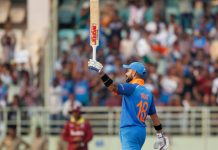
AS ONE game ends, a crowd of people jostles to play next. Twelve-year-old Surdhenshu Mitra makes his way through the crowd, only to find the seat on the cold metal railing has already been taken by an adult. His face falls, but Ashutose Bose Roy, the silver-haired man in the other chair, who happens to be one of the vice-presidents of the Gariahat Chess Club, says to his opponent: “Let the kid play. You and I are old. He’s young; he can still learn a lot.” The boy gleefully takes his place and starts setting up the pieces.
It is a scene out of a sports movie, the inspirational story of an old curmudgeon taking young talent under his wing. In Steven Zaillian’s Searching for Bobby Fischer, chess prodigy Joshua Waitzkin finds Vinnie (Laurence Fishburn), a speed chess hustler in Washington Square Park in New York, whose aggressive gameplay and garrulous ‘street’ wisdom earns the ire of Waitzkin’s regular coach, a more conventional chess-obsessive, but stands the young Waitzkin in good stead in the national championship and, more importantly, in his life away from the table. Unlike Washington Square, the Gariahat Chess Club is less apparently dominated by testosterone and hustle and trash talk but the chess is intense. In a resolutely urban setting, under a giant flyover at one of Kolkata’s busiest intersections (no vernal corner of an elegant park, no marble chess tables here), this community of chess players congregates every evening to play, watch and discuss the game they love.
The watching crowd discusses and dissects every move of an ongoing game, as part of a typically passionate Kolkata adda
Like countless others in this city with a long chess-playing tradition, Debashish Basu — Gora to all who know him at the club — and his friends used to play chess regularly on a table fixed on the pavement in Gariahat, one of Kolkata’s largest shopping districts, before the construction of a flyover, the first of many during Buddhadeb Bhattacharjee’s modernisation drive at the turn of the century, forced them to abandon their spot. Undeterred, they embraced the very cause of their transplantation and relocated their game to under the flyover once it was completed in 2002. As Roy puts it, “The flyover gave us shelter against rain and a constant source of light. So why not?” Playing at the intersection, they soon attracted attention, and throngs of people often gathered around the players to watch, bark instructions, and maybe even get a game. You had to be brave to play, many of the regulars were accomplished players in their own right, and word soon spread through the tournament circuit. By 2006, the group had acquired a critical mass and Basu did what any Kolkatan would in such a situation: he started a club.
Subir Ghosh, the joint secretary of the club, is one of the newer entrants. He stands next to Mitra, conferring with the boy on moves before manoeuvring the pieces himself. Neither is the watching crowd too deferential to participate. Every move is discussed and dissected, made and unmade as part of a typically passionate Kolkata adda. Mitra doesn’t mind; he says he learns a lot from the adults’ discussions. With professional coaches charging up to Rs 800 a session, an increasing number of parents are bringing their children here to play and learn for free. Mitra’s mother has left him here while she goes about her shopping.
Ghosh played earlier in a room at the nearby Ballygunge railway station, but decided to move because the area was prone to political violence. The room is now a party office. He doesn’t share the general enthusiasm for Kolkata’s chess tradition. “Children in Chennai and Bengaluru are playing chess by the hundreds. It’s part of their syllabus,” he says. “The numbers here are encouraging, but Kolkata still has a long way to go.” He has the fanatic’s passion when he talks about chess, an obsession his family has tried in vain to curb. It’s the same in Roy’s house. “I’m almost 78 now,” he says, “and my family has resigned itself to the fact that I have to play chess every day.” Everybody has a similar story here, which they share with endearing sheepishness.
THE TRAFFIC is at a standstill because of a long red light with the inevitable irritable honking. But the players play on nonetheless; not the serene chess players of Satyajit Ray’s famous film, but completely absorbed in the world of the evening game, arguing over every move, mocking, cheering, or even talking about the day. It’s become a popular hangout, underneath the flyover: couples sip tea, a Gariahat Carrom Club has been established.
One would think it would be annoying to play in such a din. “It is at first,” Roy says, “but it’s great practice for tournaments. If you can concentrate with all the honking, the pressure of a tournament will be nothing.” Ghosh and Mitra have Roy on the mat, having breached his defence and raining down perennial checks. The crowd begins joshing him about losing to a kid, but Mitra makes a dubious move. Roy calmly lights a cigarette and responds with an attack down the centre. Mitra fights — players rarely resign here until the bitter end — but it’s downhill from there. The end comes soon after, and the duo resign. The onlookers reset the position at which the fatal error took place. They play out the position to its logical conclusion: it still would have been a win for Roy, but he would have had to work for it. They sigh and set up the pieces again. It’s time for the rematch.
Ajachi Chakrabarti is a Correspondent with Tehelka.
ajachi@tehelka.com











